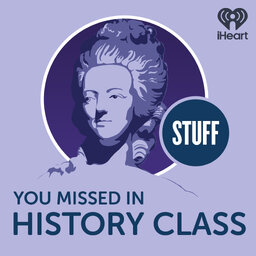The Abduction of William Morgan, Part 2
When William Morgan's manuscript "Illustrations of Masonry" was finally published, it was really kind of boring. So why were people so eager to suppress it, and what truly happened to him after his abduction?
Research:
- “An Old Story Revived.” New York Times. July 9, 1881. https://www.newspapers.com/image/20379152/?terms=%22william%20morgan%22&match=1
- “Another Morgan Story.” New York Times. July 22, 1881. https://www.newspapers.com/image/20381332/?terms=%22william%20morgan%22&match=1
- “Black Rock – Thursday Evening, October 5.” Black Rock Gazette. Oct. 5, 1826. https://www.newspapers.com/image/254877445/?terms=%22william%20morgan%22&match=1
- “Captain Morgan.” The Evening Post. Nov. 14, 1862. https://www.newspapers.com/image/40603708/?terms=%22william%20morgan%22&match=1
- “Captain William Morgan.” Black Rock Gazette. Nov. 9, 1826. https://www.newspapers.com/image/254877491/?terms=%22william%20morgan%22&match=1
- “A Good Enough Morgan Again.” The Evening Gazette. June 24, 1881. https://www.newspapers.com/image/10020603/?terms=%22william%20morgan%22&match=1
- Greene, Samuel D. “The Broken Seal: Or, Personal Reminiscenses of the Morgan Abduction and Murder.” Ezra A. Cook & Company. 1873. Accessed online: https://play.google.com/store/books/details?id=dw4AAAAAYAAJ&rdid=book-dw4AAAAAYAAJ&rdot=1
- Morgan, William. “Illustrations of Masonry.” Chicago. Ezra A. Cook Publications. 1827. (Digital copy.)
- “The Morgan Monument.” New York Times. Sept. 15, 1882. https://timesmachine.nytimes.com/timesmachine/1882/09/15/102787325.pdf?pdf_redirect=true&ip=0
- Pritchard, Samuel. “Masonry Dissected.” London. Charles Corbett. 1730. Digital copy: https://archive.org/details/MasonryDissected/page/n3/mode/2up
- “Proclamation by DeWitt Clinton.” Black Rock Gazette. Nov. 16, 1826. https://www.newspapers.com/image/254877503/?terms=%22william%20morgan%22&match=1
- “The reported discovery of the remains of William Morgan … “ Brooklyn Daily Eagle. June 27, 1881. https://www.newspapers.com/image/50402459/?terms=%22william%20morgan%22&match=1
- Riley, Kathleen L. “Lockport: Historic Jewel of the Erie Canal.” Arcadia Publishing. 2005.
- Ross, Peter. “A Standard History of Freemasonry in the State of New York: Including Lodge, Chapter, Council, Commandery and Scottish Rite Bodies, Volume 1.” Lewis Publishing Company. 1899. Accessed online: https://play.google.com/books/reader?id=-GciAAAAMAAJ
- “To the Public.” Black Rock Gazette. Oct. 12, 1826. https://www.newspapers.com/image/254877456/?terms=%22william%20morgan%22&match=1
- “William Morgan’s Bones.” New York Times. June 22, 1881. https://timesmachine.nytimes.com/timesmachine/1881/06/22/98562253.pdf?pdf_redirect=true&ip=0
- “The masonic fraternity and others … “ Poughkeepsie Journal. August 23, 1826. https://www.newspapers.com/image/114416277/?terms=%22william%20morgan%22&match=1
 Stuff You Missed in History Class
Stuff You Missed in History Class


